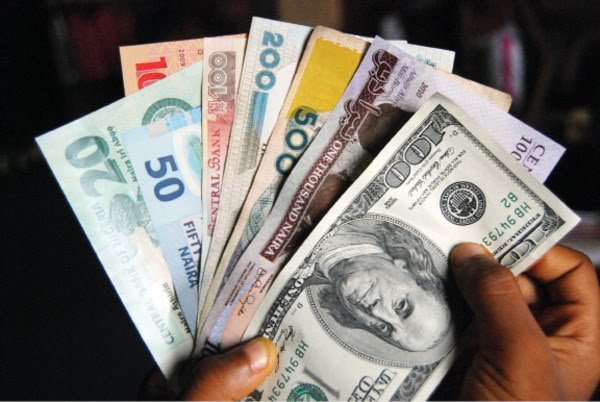
For millennials so they understand SAP wasn’t gloom…
Audu Ogbeh, a former minister of agriculture, is captured on video saying Nigeria’s economic woes started in 1986. He said, “The tragedy of Nigeria began in 1986 when we did the structural adjustment programme. When we were persuaded to devalue our currency every week for 32 years… until the naira hit N527”. Well, the naira has hit N700 with their peculiar countermeasures and I wonder what he has to say.
Nigeria’s economic woes did not start in 1986 as stated by Audu. It started in 1982 with the collapse of oil prices to as low as $9 after attaining a peak of $40. Earlier than that, in the year 1981, Chief Obafemi Awolowo warned the nation that its economic ship was about to hit the rocks and hit the rocks it did a year later not 1986. Between 1982 and 1986 we had three Heads of State— Shehu Shagari, Major General Muhammadu Buhari and General Ibrahim Babangida who replaced Buhari in1985 and remained in office beyond 1986; SAP was introduced early in his tenure. These regime changes occurred because the economic crisis that began in 1982 persisted before the introduction of the Structural Adjustment Programme.
No surprise this blame game is coming from those pursuing unorthodox anti-SAP policies to no avail. After exhausting blaming other parties they have moved further back to blame SAP implemented 35 years ago! It’s unfortunate that the economic crisis that began in 1982 has been placed on SAP, a program developed to address and remedy structural defects in our economy. It’s akin to blaming a medically obtained therapy regime and its side effects as the cause of the disease being treated.
That Messrs Ogbeh, Buhari, Emefiele et al have implemented unorthodox policies for the last seven and half years without success gives us the opportunity to reassess the much-maligned SAP. Having not learnt the right lessons from the mid-1980s, we have reinstated failed policies of that period. And Nigeria can repeat the unlearnt mistakes for decades to come.
The words Structural Adjustment reveal there was an economic structure that needed to be changed. What was it? We will go back decades to the economic structure that emerged after independence. How we arranged our domestic economy for internal consumption and how we engaged the world in trade.
Upon the attainment of independence and aided by an influx of petrodollars in the 1970s, Nigeria created a bureaucratic economy with government at the centre of the economy. Government warehoused all foreign currencies in the economy and became the sole dispenser of forex through import licences obtained from bureaucrats. Some people like the musician Fela Anikulapo Kuti and a prominent civil servant were criminalised and jailed for currency infractions called arrangee, remember? SAP, it was, that made it possible for you and I to handle dollars and own domiciliary accounts.
With influx of petrodollars, government proceeded to seize the commanding heights of the economy leading to creation of mega parastatals and the seizing of existing plants in these sectors (like the Shell refinery in Port Harcourt and a private power station in Jos). It didn’t stop there; secondary schools were taken over across the federation. All sectors of the economy waited each year for government budgetary pronouncements before they decided upon activities for the year. It was control and control all over.
As in all things, government decided industrial policies. Newly independent countries knowing industrialisation was key pursued it with vigour. Rather than Nigeria industrialise by adding value to our agricultural produce or mineral exports Nigeria industrialised by import substitution. Meaning as the Nigerian taste grew for some items, usually foreign, you localised its production. Early examples are flour for bread, brewery products, cement, carpets, paper products, corn flakes etc. Unfortunately, we didn’t have the raw materials for most of these substituted products meaning that apart from importing the capital goods to produce these items we had to import most of the primary inputs like barley, wheat, enzymes, reagents and parts.
On the external side, there was no industrialisation to add value to our exports be it agricultural or mineral exports like crude oil. It seems we are stuck in our primary school geography of being either number one or two in tropical agricultural produce and to date we engage the world with crude produce. The irony is that Nigerian cocoa beverage companies were importing semi-finished cocoa products from India. We were also importing refined palm oil from Malaysia.
All was well until oil prices that financed the imports crashed in 1982 and the inherent weakness of the system was exposed. The regimes of Shagari and later Buhari did not do anything about these structural issues and responded to the crises with measures like austerity measures, belt-tightening, and price controls. Some unorthodox voodoo economic measures were adopted like international trade by barter when we paid for essential commodities with barrels of crude oil rather than hard currencies. Government then portioned out these commodities to the populace bureaucratically in what became known as “essenco” a wieldy system of distribution that abandoned the market.
This was the structure of the Nigerian economy before 1986 and central to it was the fixing of the naira to dollar value by government pronouncements and a wide gap between the CBN rate and parallel market rate. On assumption of power by Babangida, and after much public debate, he chose to adopt IMF advice of restructuring the economy without taking an IMF loan.
Components of what became known as SAP included the phased introduction of market bidding to determine value of the naira to foreign currencies. Such a change came with initial upheavals. This was accompanied by phasing out of issuance of import licences by bureaucrats. International trade by barter, the precursor to today’s Yuan/Naira swap, became a thing of the past. It was during this period that Bureaux de Change was introduced for currency exchange transactions outside of the formal finance houses.
Some of the present giants in the banking and finance sector were issued operational licences during the first SAP period and they spread their wings beyond Nigerian borders.
Along with this was a lower tier of banks, Peoples Bank, Community Banks and now Microfinance banks which are now listed on the Nigerian Stock Exchange. These widened and deepened the Banking and Finance sector of the Nigerian economy.
Industries based on local raw materials replaced those using imported raw materials. Sorghum and maize replaced barley as brewery inputs while commercial wheat cultivation was introduced in the North. Soybean cultivation took hold to replace imported soybean meals for the poultry industry. This poultry sector changed overnight from having all its inputs being imported to one where over 85 per cent of its inputs were sourced within Nigerian borders leading to a flourish of this sector after an initial decline.
The period witnessed the beginning of privatisation and the divestment of government from the commanding heights of the economy. Countless parastatals have been privatised successfully and others woefully. The participation of the private sector in heights of the economy as in banking, steel, cement, refineries and private airlines started in this much maligned period.
Unfortunately, politics of transition to civil rule derailed SAP in 1992. With the enthronement of democracy, former president Olusegun Obasanjo reinstated most of SAP and renamed it a Reform Agenda. Earlier, after the SAP riots, he had pleaded that SAP be given a ‘human face’. With his reform agenda, which in essence was SAP2, the economy grew fast as the earlier SAP1 had prepared for SAP2 to immediately kick in and yield results.
In the final analysis, an economy needs to keep reinventing thus adjusting upwards on the ladder of economic progress. Doing this on a continual basis results in an economic transformation from a third-world economy to a first-world economy.
Dr Jaiyesimi writes from Sagamu





